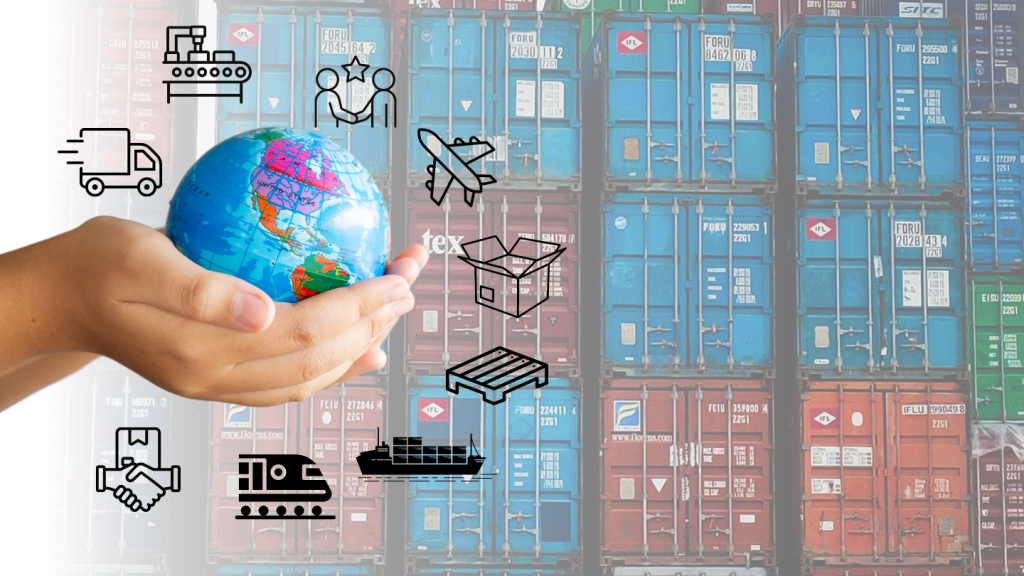
Technology and processes in resilience are critical.
There are several steps in dealing with disturbances. Preparation and anticipation are the ones before the crisis begins. So, how do we prepare? And how do we anticipate? The short answer is DATA and PROCESSES. Hence, this 3rd article in this 4-article series, in which we discuss the third pillar of action to building a resilient supply chain: technology and processes.
Make sure to read the entire series, subscribe to our newsletter.
Since the beginning of the pandemic, several articles have promoted that technology can create a resilient supply chain. It is our position that technology on its own, at least for now, cannot convert a supply chain into a resilient supply chain, but it can provide a crucial element, data.
Technology Provides Access to Data in Resilience
Anyone who has implemented any of the current available technology knows that this comes with an enormous level of new data. Having access to this level of data, can be quite dizzying, and understanding what is important to the organization is mandatory. This information is not specific to supply chain, but rather to the organization as a whole. Hence, the importance of having a clear mission, strategy, and communication between all the members of the organization, such as presented in our first article. Knowing how to read this new information, how to interpret it and understand it will require new skills within the organization. Data analysts who understand the supply chain can help create the right tools to interpret and to coach leaders and team members to make sense of what they are looking at.
In a modern supply chain, transparency and visibility help us better transfer information between all stakeholders to increase collaboration levels and efficiencies. By sharing real-time data across the supply chain and managing it in a control tower model, it is easier to identify potential situations that could escalate in disturbances and crisis. For example, if the collaborative agreements are in place, we could see our clients inventory levels of our A stocks in their facilities and could proactively prepare and ship out the goods to the right location to ensure customer service levels. Transparency could also help us see where our inbound load is and when we will receive it so that we can plan our resources for execution.
Seeing Into the Future with Technology
Another element of supply chain, particularly for those that have suppliers throughout the world, is being able to see emerging events that could harm us. For example, an organization that possessed the right technology to see orders and inbound shipments out of China at the end of 2019, plus a way of tracking local events and news, could have been able to take proactive actions such as increasing communication with their supplier, increasing their order volume and requesting advanced departure dates to avoid the downturn that we saw at the beginning of 2020.
Understand workflows
All the technology in the world cannot help us if we don’t first understand how decisions work is accomplished. Hence, the necessity to map our workflows throughout the organization to ensure the right process is followed, known, and that any deviation is seen rapidly. The holistic approach to the processes is critical to gain a beginning-to-end view and understand where in the chain the disruptions can impact and at what cost.
Clearly established processes can in turn become part of the machine learning (ML) and Artificial Intelligence (AI) tools that are being developed today. By knowing and understanding our own processes, we can teach the computer, through ML, what to look for as anticipatory signals of disruptions. In turn, AI could then study and propose several alternatives with their associated data of constraints, time studies and changes in cost to give us the ability to make decisions faster.
“Data first, not digital first, is the key that unlocks anticipatory, agile, and resilient supply chains.” (Schrage, 2020)
Next week, we will continue the series discussing risk management as a pivotal element to strengthen resiliency within the supply chain. To receive all the articles, please register for our newsletter.
CONTACT US TO FIND OUT MORE!
Photo Credit: Arek Socha de Pixabay
Sources:
(2020) Supply Chain Transparency Creates Resilient Operations. Ryder
Aylor, B. et al. (2020) Designing Resilience into Global Supply Chains. BCG.
Fiksel, J. et al. (2015) From Risk to Resilience: Learning to Deal with Disruption. MIT Sloan Management Review. Winter 2015, vol. 56, no.2.
Gandhi, S. and S. Mehltretter (2020) Toward a more resilient supply chain. CSCMP’s Supply Chain Quarterly.
Gartner for Supply Chain (2020) Weathering the Storm: Supply Chain Resilience in an Age of Disruption. May 2020.
Heath, B. and A. Christidis (2020) Invest in People to Best Manage Through Disruption.MIT Sloan Management Review.
(Kaplan. R. et al. (2020) The Risks You Can’t Foresee. HBR November-December 2020
Kirkman, B. et al. (2019) The 4 Things Resilient Teams Do. HBR.org
Linton, T. and B. Vakil (2020) Coronavirus is Proving We Need More Resilient Supply Chains. HBR.org
Lund, S. et al. (2020) Risk, resilience, and rebalancing in global value chains. McKinsey Global Institute
Raman, K. and D. Ryntjes (2020) The Route to a More Resilient Supply Chain. Gartner Business Quarterly
Schrage, M. (2020) Data, Not Digitalization, Transforms the Post-Pandemic Supply Chain.MIT Sloan Management Review
Shaikh, S. and J. Baker (2020) Building Supply Chain Resilience Through a Boundaryless S&OP and S&OE Process.BlueYonder
Sheffi, Y. and James B. Rice Jr. (2005) A Supply Chain View of the Resilient Enterprise. MIT Sloan Management Review, Fall 2005, vol. 47, no.1.
Unruh, G. (2016) Strategies for Business Resilience. MIT Sloan Management Review
Unruh, G. (2016) The Surprising Secret of Business Resilience. MIT Sloan Management Review
Urciuoli, L. Automating Supply Chain Resilience Should Be High on Your Digital Agenda,MIT Sloan Management Review, Jan 2017.







